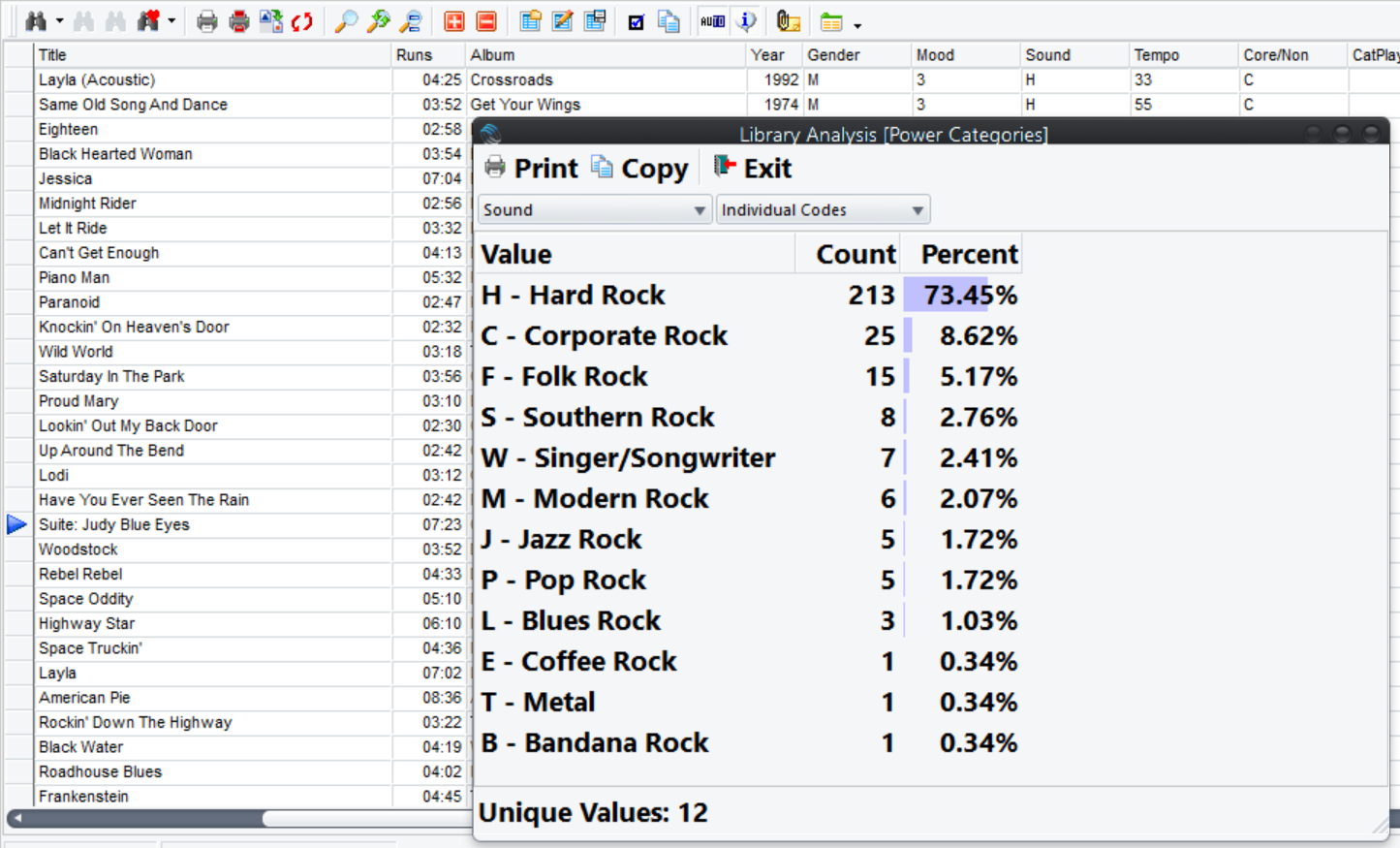MusicMaster Blog
Blog Archive
June- Importing/Exporting clocks within MusicMaster CS/Web Client
- Done with Dupes: ‘Multiple Categories’ in CS
- Cross-station rules and protection in MusicMaster CS and MusicMaster Web Client
- Setting Up Users and Roles in MusicMaster CS — Easy, Breezy, and Totally Doable!
- MusicMaster Pro 8.0.15
Music Maintenance in 3D posted on January 10th, 2022
Music Maintenance in 3D
By Chris Malone
When scheduling a music log, it’s easy for many music schedulers to think in a linear fashion. The familiar thought process is as follows: run the automatic schedule, edit music log, check for consistency and flow, then export the log before the Traffic Department starts screaming there’s no log to merge. It’s a very traditional mindset, but there’s another dimension to consider – how well are your artists rotating from day to day? How well balanced is your music library? What’s lurking in a hold category? Let’s look at these three areas.
Artist Rotation
In this example, we are looking at just about a week of the history graph and in artist keyword view. We can see Ed Sheeran is getting good representation usually in the midday, 1pm hour but the distribution is not even throughout the rest of the day, missing evenings. If ensuring your artist spread is well balanced is important to your overall station sound, then consider putting a rule in place to make sure artists aren’t clumping in one area but getting adequate exposure to your total audience by using the Keyword Hour Rotation rule.
In addition to the traditional, linear artist Keyword Time Separation rule, you can consider a modest Artist Keyword Hour Rotation rule that prevents an artist from playing in the same place day to day. You can choose the window size that includes the days back to consider and an hour window to restrict the artist from playing again in a certain time from (1 day, 3 hours in the example above). Other rules that can help for a better day-to-day spread are Keyword Hour Position Kick that allows you to prevent the artist from playing in the Quarter Hour day-to-day or Keyword Sliding Hour Rotation that allows you to look forward and backwards around a play from any particular artist.
Another consideration is to use the Optimum Scheduling Goal for Artist Keywords to give you an additional layer of protection.
Library Analysis
In a linear fashion we add songs, place them in a category, code the element, and move on with our duties. When thinking about multi-dimensional programming from a larger strategic view, it’s important to ensure that you’re hitting your sound code target (or any other important coding parameter) for the radio station. You can run a library analysis on your entire sound code selections to make sure that the proper ‘sound’ is reflect in your library and meets your strategic station standards.
To run a library analysis, right click on your Sound field in your Library and select Library Analysis. This Classic Rock station is a heavy on Hard Rock music and doesn’t have much variety outside of that sound based on the songs in the rotated music categories. You can print this analysis and carry it in your next music meeting to re-align your library or future music tests.
Hold Category
When you’re done with a song in rotation, it’s common practice to just send the song to the never-ending graveyard. We do recommend you keep songs and not delete them from your data. This allows you to retain any coding you’ve entered, review the history and most importantly allows you to continue running History Browser reports that will be accurate.
So why am I suggesting you review the Hold category? It’s not uncommon for a song to become popular again. It’s also possible that the songs here could still work in your rotation. As you review the category, think about any songs that could still rotate and give your audience that “oh wow, I haven’t heard that song in a long time” feeling. If you can find a bunch of those songs, you could just pick them in the Editor when you’re looking to fill a position. You might also want to consider Auto Platoon. This feature is designed to move songs in an out of rotation. You have the active category and the platoon category. Both have to be populated for this to work. Once you determine the Schedule, MusicMaster will automatically move songs in an out to continue those “oh wow” moments.
If you need assistance with rules, library analysis or just want to do a database review, please feel free to reach out to your MusicMaster Music Scheduling Consultant.






